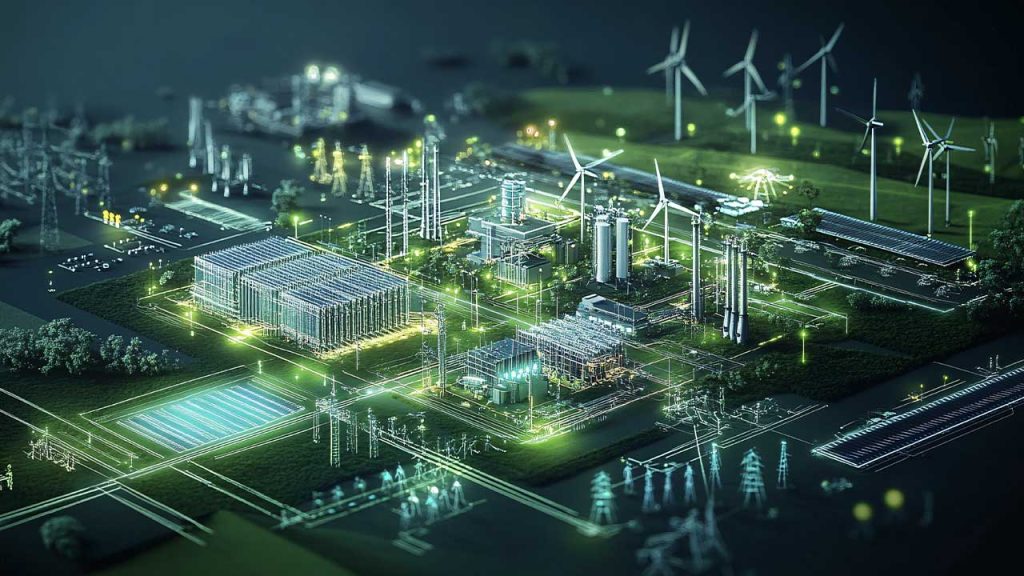The future of reliable energy: How IIoT is powering smarter microgrids
Dependable backup power has become a critical part of a facility’s strategy for energy reliability, cost management, and sustainability. But as demand outpaces grid readiness and resilience becomes a non-negotiable requirement, facility operators are leaning into innovation and data-driven solutions to stay ahead.
The next wave of energy value is being shaped not just by infrastructure, but by intelligence. IIoT technologies have already helped microgrids evolve from reactive, backup-only systems to intelligent platforms that balance real-time performance with long-term strategy. From predictive maintenance to emissions-aware dispatch and grid coordination, IIoT is further redefining what microgrids can do and how fast they can adapt to shifting energy needs.
Beyond the box: Monitoring, maintenance, and uptime
At the core of IIoT’s impact on resiliency is the ability to monitor and manage microgrids with precision across entire installations or down to individual components. Sensors embedded throughout the system constantly feed telemetry data into intelligent software platforms that evaluate parameters like temperature, vibration, fuel quality, emissions, and load.
These platforms use real-time analytics and digital twin models to detect anomalies, predict degradation, and recommend timely maintenance. Instead of relying on fixed schedules, operators can now act based on actual system conditions. For example, an oil change is no longer solely based on a set amount of time or usage; it’s a data-driven insight derived from performance trends.
This predictive approach doesn’t just reduce downtime; it extends asset life, improves safety, and aligns with uptime service level agreements that many industries depend on. And the value here is operational as much as it is strategic. In an environment like resiliency services, where even a moment of downtime can cost millions, or worse, risk lives, IIoT-based predictive maintenance becomes a frontline defense against failure.
Grid awareness and dispatch intelligence
The potential of IIoT goes beyond equipment health. It’s also changing how and when microgrids engage with the larger grid, and this is where the “smarter” approach to power becomes so effective.
Through AI-enabled analytics, microgrids assess grid conditions in real time, tracking energy prices, carbon intensity, load forecasts, and capacity constraints. The system can see events like grid demand spiking, wind generation dropping, and electricity prices rising, enabling facilities to make intelligent, automated decisions about when to dispatch onsite generation.
For example, if demand is high, renewables drop, and prices spike, the system can shift load to the microgrid. This reduces costs, eases grid strain, and improves resilience while staying aligned with customer goals.
Automated, insight-driven dispatch helps balance priorities like cost, carbon emissions, and continuity. It’s especially relevant in regions with volatile prices or renewable-heavy grids, where carbon intensity fluctuates hourly. IIoT can help manage energy use in ways that support ESG goals without compromising performance.
Modular flexibility for modern needs
The modular nature of IIoT-equipped microgrids makes them well-suited to fast-growing industries with distributed energy needs. For developers of data centers, manufacturing campuses, and hyperscale facilities, flexibility is critical, especially when power grid interconnection queues stretch 5 to 10 years and delay project timelines. With modular systems and intelligent dispatch, companies can sidestep grid bottlenecks and bring new facilities online faster. This also aligns with utility and regional goals for reliability and decarbonization.
The “flexible capacity” concept allows large users to reduce peak demand, participate in demand response programs, and support grid reliability. In many cases, this capability also helps integrate more renewable energy by providing reliable backup during intermittent conditions.
Aligning energy strategy with sustainability
One of IIoT’s most promising microgrid applications is its ability to make sustainability efforts actionable. Systems can now be paired with emissions monitoring and fuel tracking tools to measure and reduce their carbon impact.
For instance, data centers focused on low-carbon operations can use real-time carbon intensity data to decide when to pull from the grid or switch to onsite generation. Modern tracking platforms, including those that measure renewable or responsibly sourced natural gas, act like a carbon dashboard, guiding decisions that balance environmental and financial goals.
This level of transparency is increasingly expected by ESG-conscious stakeholders and regulators, helping organizations meet internal emissions goals in ways that are auditable and integrated with long-term infrastructure planning.
Smarter data, smarter energy
IIoT’s value lies in merging the physical and digital sides of energy systems. As connected infrastructure generates more data and AI tools grow more capable, microgrids are evolving into fully automated, self-optimizing platforms.
Hospitals can factor in weather forecasts and local grid stress to preemptively shift to onsite power. Data centers can pivot instantly based on carbon intensity. These are no longer theoretical scenarios; they’re best practices.
The integration of IIoT into microgrid operations marks a fundamental shift in how we approach energy reliability. Microgrids are no longer just emergency backups; they’re strategic, intelligent systems that support the grid, boost resilience, and advance clean energy goals.
As energy demands grow more complex and reliability more critical, IIoT-enabled microgrids will bridge the gap between resilience and sustainability with faster deployments, smarter decisions, and cleaner performance.
About the author
 This article was written by Pete DiSanto. With more than 25 years of progressive leadership in the energy sector, Pete DiSanto has built a career defined by operational excellence and value-driven solutions. As Executive Vice President of Enchanted Rock’s Products Division, he leverages his engineering expertise, negotiation skills, and strategic vision to ensure the company’s technology offerings meet the diverse power generation needs of its customers
This article was written by Pete DiSanto. With more than 25 years of progressive leadership in the energy sector, Pete DiSanto has built a career defined by operational excellence and value-driven solutions. As Executive Vice President of Enchanted Rock’s Products Division, he leverages his engineering expertise, negotiation skills, and strategic vision to ensure the company’s technology offerings meet the diverse power generation needs of its customers



